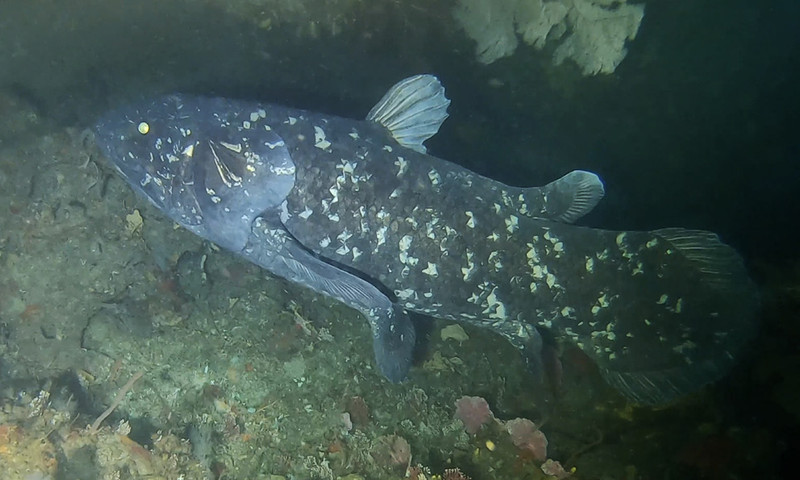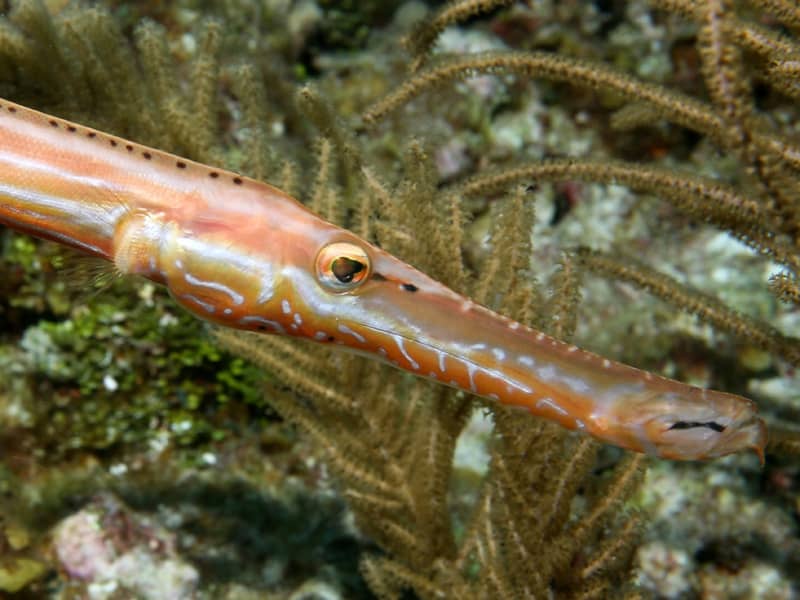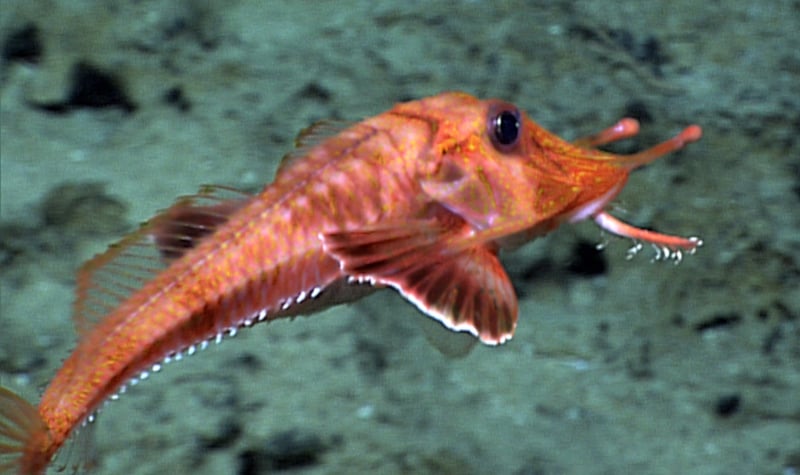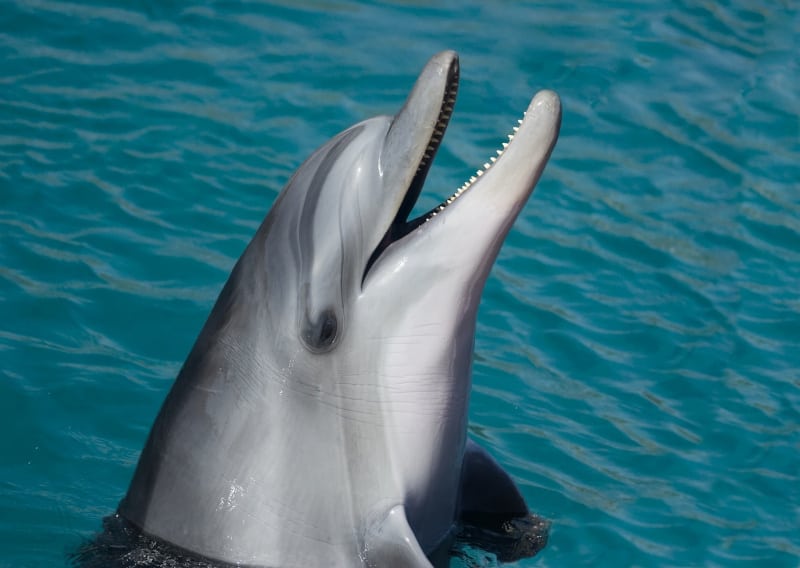
West Indian Ocean Coelacanth Facts
- This creation of Nature and evolution most frequently goes by the common name of the West Indian Ocean Coelacanth. That’s not its only general title, though. That’s because it’s also called the African coelacanth, gombessa, or simply coelacanth.
- That last one’s somewhat deceptive, however. That’s true since this animal represents one of only two known survivng species of coelacanth. This creature, along with its related species, holds the distinction of literally being considered a living dinosaur!
- In addition to its remarkable status, it also holds another hard to pronounce name. That’s true since scientific professionals typically refer to it by its formal moniker. For the layperson, though, that’s hard to pronounce, given that it’s Latimeria chalumnae.
- The animal received that tongue-twisting official title due to the efforts of the respected South African icthyologist, James Leonard Brierley Smith. He accomplished the first official recognition of it as a separate and distincts species. That event occurred in 1939.
- Sadly, the population of the West Indian Ocean Coelacanth appears to be both quite small, and diminishing. That unfortunate trend also seems to hold true throughout the entirety of its range. The IUCN therefore now lists it as Critically Endangered.
- Due to its precarious situation, it faces numerous threats to its continued existence as a species. many of these stem from the actions of humans. They include such problems as habitat loss and commercial fishing bycatch. It’s also vulnerable to climate change.
Related Articles

Atlantic Trumpetfish


West Indian Ocean Coelacanth Physical Description
The West Indian Ocean Coelacanth mystifies most people who encounter it. That’s partly due to its size, since it’s a relatively large fish. Yet the majority of the interest it garners stems from its utterly unique appearance. It’s barely evolved at all in roughly 80 million years!
One trait the fish does have in common with many animals in the world today related to physical characteristics. That’s because it displays a certain degree of the physiological trait of sexual dimorphism. In its case, that manifests itself in terms of simply physical size.
More precisely, females of this species typically attain a larger size than their male counterparts. The overall difference, though, is comparatively minor. Otherwise, individuals of both sexes remain virtually indistinguishable by untrained observers with the naked eye.
In general, however, specimens typically reach a maximum body length of approximately 6.5 ft (1.98 m). An average weight, on the other hand, generally equals around 176 lb (80 kg). Exceptional individuals do occur, though, in both categories, regardless of gender.
The West Indian Ocean Coelacanth possesses a relatively small head and mouth. This animal also evolved large eyes, with numerous visual cells, to aid in seeing in its native habitat. Its elongated body displays several small fins, along with a broad, flat, vertical tail.
Yet its the coloring of the amazing denizen of the depths that perhaps catches the most attention. Specimens generally displays a background consisting of a deep royal blue shade. That’s complimented, though, by the presence of multiple small, off-white spots.
- Kingdom: Animalia
- Phylum: Chordata
- Class: Actinistia
- Order: Coelacanthiformes
- Family: Latimeriidae
- Genus: Latimeria
- Species: L. chalumnae

West Indian Ocean Coelacanth Distribution, Habitat, and Ecology
The marvelous West Indian Ocean Coelacanth evolved as endemic to a very specific region of the globe. The exact location of that region, however, comes as no surprise, given its very name. As that implies, the remarkable fish lives in the western sections of the Indian Ocean.
Even there, though, it only appears in certain parts of the greater area. Its population seems to be widely, yet sparsely, distributed around the rim of the region. That range stays close to the coast, and extends from South Africa, along the East African coast, to Madagascar.
Within this territory, the impressive creature displays decided preferences in its choice of habitat. The vast majority of observed specimens tend to spend a great deal of their time in underwater caves. These usually tend to be volcanic in origin, since they’re locally common.
Yet it also presents a preference for a certain range of depths. Most examples of the species reside at depths ranging from 590 – 690 ft (180 – 210 m). Some do venture as deep as 797 ft (243 m), though. The shallowest observed presence occurred at a depth of 177 ft (54 m).
Much like many varieties of fish, the West Indian Ocean Coelacanth feeds opportunistically. It typically emerges from its concealment at night to do so. Prey consists of a wide variety of locally prevalent species. This includes eels, cephalopods, cuttlefish, and various fish.
The intriguing animal also evolved as what’s called ovoviviparous. This means that females retain their eggs in their bodies until they hatch. Gestation o the eggs takes three years, the longest of any known vertebrate! An average lifespan measures approximately 48 years.
Species Sharing Its Range

West Indian Manatee


Check out our other articles on 5 Beautiful North American Birds, Striped Skunk, Deception Island, Southern Plains Bumblebee, Philippine sailfin lizard, Sardinia, American Giant Millipede









Leave a Reply